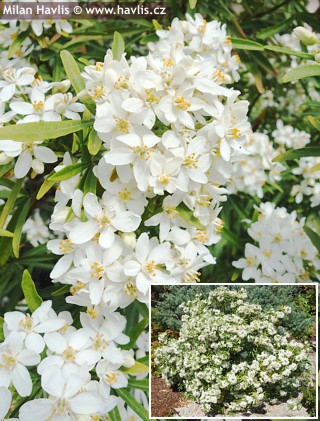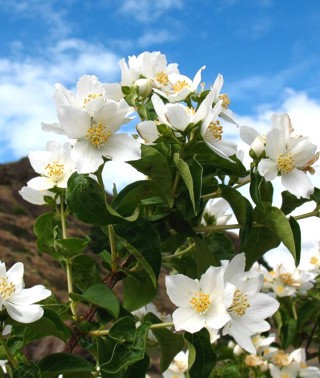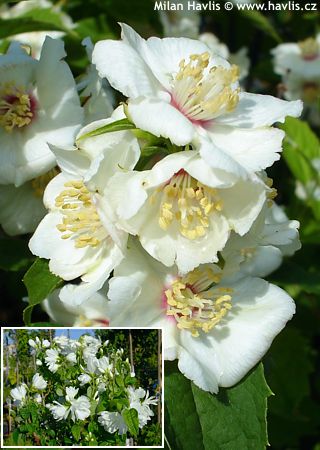Philadelphus 'LEMOINEI' Lemoine's mock orange
Philadelphus
The genus Philadelphus comprises around sixty species of deciduous shrubs in the hydrangea family. They are native to North and Central America and to East Asia, where they grow on slopes, in thickets and along streams. They reached Europe as early as the 16th century and quickly became popular for their snow‑white blossoms and intoxicating fragrance reminiscent of orange blossom. The botanical name refers either to the Greek word philadelphos – “loving brother” – or to the Egyptian king Ptolemy II Philadelphus. In the 18th and 19th centuries they became an inseparable part of castle parks and bourgeois gardens. The common English name mock orange refers to this very fragrance, which closely resembles that of true orange trees (Citrus aurantium), even though the plants are not related.
The hybrid Lemoine mock orange, or formerly Philadelphus × lemoinei, was created in Nancy, France, in 1884 by the breeder Victor Lemoine. He crossed the common mock orange (P. coronarius) from southern Europe and the Caucasus with the littleleaf mock orange (P. microphyllus) native to the southwestern United States. The result was a shrub that retained the abundant flowering and fragrance of the first parent but inherited the more compact growth and finer branching of the second. This hybrid became the foundation of an entire group of Lemoine mock oranges, many of which are still cultivated today.
Lemoine’s mock orange is most striking for its fragrance – sweet and jasmine‑like, filling the whole garden, though not as overpowering as that of P. coronarius. The flowers have four white petals, 2–3 cm across, arranged in terminal clusters of three to seven. Flowering begins in the first ten days of June and is among the most profuse in the genus. The shrub develops an upright to arching habit with age and usually reaches 1.5 to 2 metres, sometimes a little more in favourable conditions. The leaves are deciduous, small, ovate, smooth above and softly hairy beneath. Compared with P. coronarius it appears gentler and more delicate, which makes it suitable even for smaller gardens.
In the landscape, Lemoine’s mock orange works beautifully as a specimen shrub, where its abundant flowering can be fully appreciated, but also in informal hedges. It combines well with roses, lilacs or spiraeas, which bloom at the same time and complement its white cascade with colour. In parks it is often planted near paths and benches so that passers‑by can enjoy its fragrance. In smaller gardens it fits into mixed shrub borders, where its compact form prevents it from becoming overbearing.
Cultivation is straightforward. It thrives best in full sun to partial shade, in well‑drained, moderately moist soil. It tolerates poorer conditions, though it suffers in heavy, waterlogged ground. It requires no fertilisation. After flowering it is advisable to prune – removing spent shoots and the oldest branches – to keep the shrub vigorous, fresh and floriferous. It is not poisonous or allergenic. Fully hardy down to −30 °C, it requires no winter protection.
Last update 27-06-2008; 02-11-2025
Goods are shipped all over Europe. For Russia and U.K. and for further details please read about SHIPPING OPTIONS HERE.
Are you interested in a serious discount for orders NOV-FEB? Check your options here.
THE PRICES INCLUDE VAT of 15%. For quick conversion you can use 1 CZK = approx. 0.04 EUR
- STANDARD QUALITY - Plants of this group are 1st class quality with number of branches and overall density adequate to their size and age, considering they were container grown.
- DE LUXE QUALITY - This label guarantees a luxurious quality of manually selected plants that, compared to their height and age, are exceptionally dense and beautiful.
- EXTRA - These plants are usually mature and bigger specimens with exceptional overall appearance.
- STANDARD (as described in the plant form) means a tree with a trunk of 190-210 cm and a crown at the top, unless specified differently. The commercial size for trees is their girth measured in the height of 1m from ground.
- HOBBY - These plants are of the same quality as our standard-quality plants but younger and therefore cheaper.
- SHRUB - a woody plant with branches growing bushy from the ground level.
- HALF-STANDARD or MINI-STANDARD - a small tree with shorter trunk, its size is usually specified.
- FEATHERED - These are trees with branches growing already from the base of the trunk and up along the stem.
- GRASSES and PERENNIALS - Sizes given usually read the diameter of the pot or the clump, as specified.












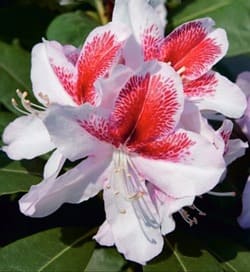




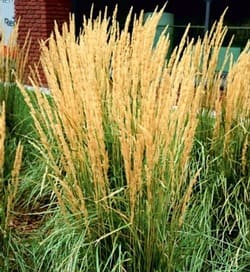
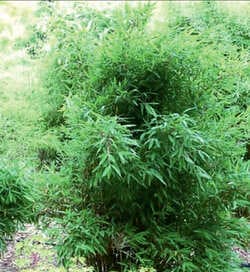
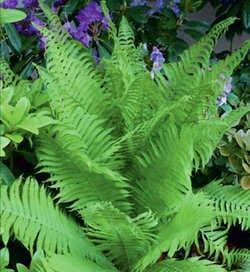




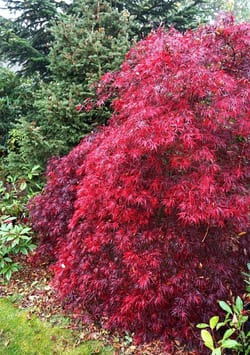
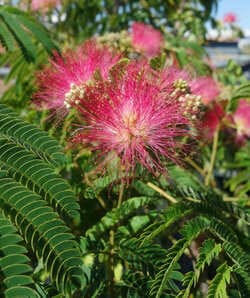
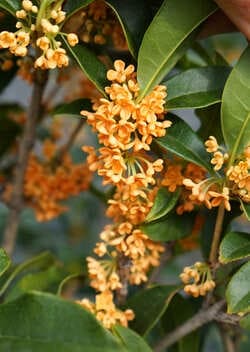



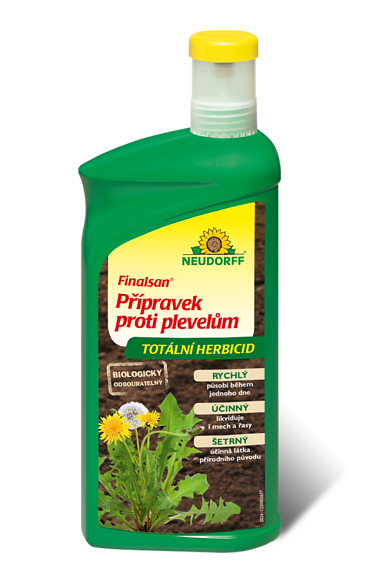


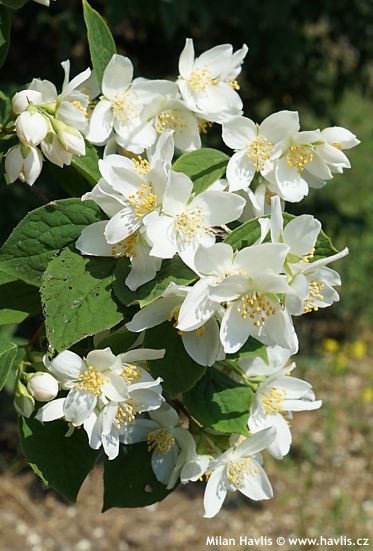
.jpg)





